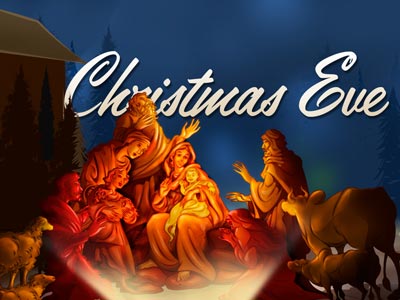-
Advent 2 - Shepherds
Contributed by Spencer Homan on Nov 28, 2017 (message contributor)
Summary: This is the second week of our Advent series 2010
Luke 2:8-18
8 And there were shepherds living out in the fields nearby, keeping watch over their flocks at night. 9 An angel of the Lord appeared to them, and the glory of the Lord shone around them, and they were terrified. 10 But the angel said to them, "Do not be afraid. I bring you good news of great joy that will be for all the people. 11 Today in the town of David a Savior has been born to you; he is Christ the Lord. 12 This will be a sign to you: You will find a baby wrapped in cloths and lying in a manger." 13 Suddenly a great company of the heavenly host appeared with the angel, praising God and saying, 14 "Glory to God in the highest, and on earth peace to men on whom his favor rests." 15 When the angels had left them and gone into heaven, the shepherds said to one another, "Let's go to Bethlehem and see this thing that has happened, which the Lord has told us about." 16 So they hurried off and found Mary and Joseph, and the baby, who was lying in the manger. 17 When they had seen him, they spread the word concerning what had been told them about this child, 18 and all who heard it were amazed at what the shepherds said to them.
Shepherds – To Bethlehem Through Art 2
We are taking a different path to Bethlehem this year, by looking at some famous works of art. Last week I talked to Alyssa about what she thought of the video, and she replied quite frankly, “I hated it.” Turns out, the video which very quickly flashed what seemed to be random images made very little sense to anyone but me. So we are remodeling it a little bit, and taking some more time to introduce it today.
The first part of the video will show us some historical pieces of work have been labeled and dated, and we will work our way up from the 1300’s, to the 1400’s, 1500’s… you get the idea. Now… the reason I chose artwork is that you can do some really amazing things with artwork. You can maximize some things and minimize others. You can highlight what you want, and make anything at all the focal point. Every single painting we will look at has the exact same focal point… the exact same center of focus… the exact same highlight… I want you to try to see if you can spot it. Notice how the artists pushes everything else into the background… and pulls the most important thing forward.
The second part of the video, as you may have guessed from last week, comes from our resident artists in the preschool and elementary Sunday School classes. I call it a “modern take” on this historical scene.
Finally the third part of the video is the Junior High class acting out the drama as only they can, putting their own interpretation into this historical event.
All of these, I hope… combine to create a snapshot of this event that swings us from the very historical to the very modern, so we can look on it with eyes anew… and see the glory that God has to reveal to us.
[PLAY VIDEO]
Did you notice who the artist tended to bring Christ forward and push all else backwards? Did you catch how your eyes were always drawn to Christ? The use of color, the use of light and shadow… pushes you to focus on the most important thing in the painting. It’s not Mary…. It’s not the shepherds… it’s Christ. The focus is Christ.
One would think, that if you did a search for paintings about the Shepherds… you would find paintings about shepherds. But something very interesting happens when you do a search for paintings about shepherds… 90% of the paintings you will find are titled… “The Adoration of the Shepherds,” and in every single example the focus of the painting isn’t the shepherds… the focus is always Christ. The shepherds are scenery… they are furniture… they are servants on bended knee worship the Lord.
My question was why? Why not highlight the shepherds? Why push them to the background? I think the answer comes in understanding more about who these men really were.
In Jesus’ time; shepherds -- specifically, hireling shepherds -- had a rather unsavory reputation. The great historian Jeremias writes "most of the time they were dishonest and thieving; they led their herds onto other people's land and pilfered the produce of the land." They often went months at a time without supervision, so they were consistently accused of stealing some of the surplus. Consequently, the pious were warned not to buy wool, milk, or kids from shepherds on the assumption that it was stolen property. In fact, they were SO mistrusted… that Shepherds were not allowed to serve on a jury or be admitted in court as witnesses, because you couldn’t trust them. Let’s just be clear, these weren’t the sort of men that we would expect to be rubbing elbows with angels.

 Sermon Central
Sermon Central



